The Myopia Epidemic
There is no question that myopia (nearsightedness) rates have been increasing over the years. MiSight contact lenses is a new contact lens by CooperVision that may help prevent myopia from developing in children.
Currently in the United States, over 40% of people are nearsightedness, and in some countries in Asia, it’s over 80%! That’s a sharp increase compared to just a few decades ago.
The worry is that myopia rates will continue to rise because of changes in our visual habits due to advances in technology, particularly, in hand-held digital device such as smartphone, tablets, video games, laptops, etc.
History of Myopia Control
Many studies have been conducted to try to find a way to prevent the progression of myopia, particularly in children and in teenagers. At best, some techniques showed some modest levels of success, while many others appear to have no impact whatsoever.
Ortho-K Lenses
Ortho-K (orthokeratology) lenses are hard contact lenses that you sleep with at night in order to change the shape of your eyes (corneas). The change in shape neutralizes your nearsightedness and restores clear vision for a limited amount of time. For most people, the effect only lasts 1 day, so the lenses need to be worn every night.
Click here for more information on how Ortho-K lenses work.
Once Ortho-K started being used, an unintended effect was noticed. It seemed that the prescriptions of children who wore Ortho-K did not progress as quickly as those who didn’t.
More studies were conducted and indeed, using Ortho-K did slow down the progression of myopia. Understand that it doesn’t stop (let alone reverse) the progression, but rather, children who used Ortho-K lenses did not progress as quickly as children who didn’t.
Myopia Lenses For Glasses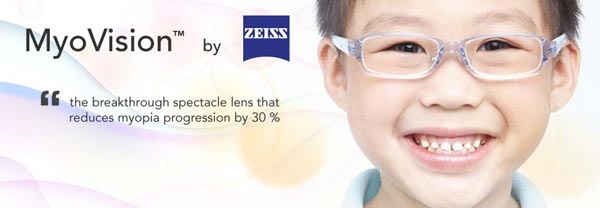
Many things have been tried on this front. The idea is that while regular lenses for glasses make the vision clear in the short run, they actually cause myopia to worsen over time.
Studies were designed to test this hypothesis by comparing the effect of normal lenses vs specially designed lenses on children. The effect of prescribing specialty lenses wasn’t overwhelming, but some studies did show modest benefits.
MyoVision is one such lens designed by Zeiss. This lens is designed to eliminate the effect that is created by conventional lenses which is thought to lead to myopia progression.
Similar to the effects of Ortho-K on myopia control, MyoVision lenses were only shown to slow down the progression of myopia, not to stop or reverse it. Additionally, the effect of this lens was only formally studied on Asian children.
To read more about the MyoVision lens, click here.
Bifocal and Progressive lenses
It has long been thought that activities that require children to focus on objects up close for prolonged periods of time causes strain on their eyes, which in turn stimulates their eyes to become nearsighted.
So Naturally, it was thought that having children wear bifocals or progressive lenses could alleviate that strain and prevent myopia progression.
Despite numerous issues with this treatment method, some studies were able to show a slightly beneficial effect, while other studies failed to produce any results. Suffice it to say this never became a mainstream treatment for myopia control in practice.
Behavioral Adjustments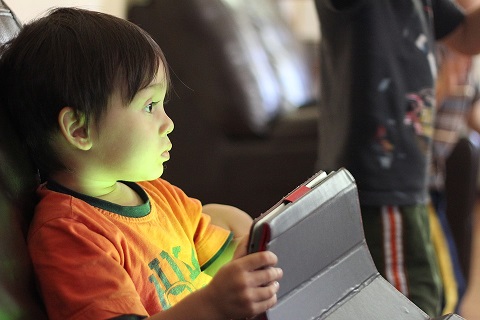
Since the spike in myopia in recent years seems to be a results of our habits and behaviors, it is reasonable to expect that curbing those negative behaviors can help to prevent or or delay the onset of myopia.
In decades past, there were a lot less activities that required children to look up close for prolonged periods of time. Avid readers were just about the only ones at risk, but even then they had ample opportunities to relax their eyes throughout the rest of the day.
Nowadays, when children are done with one activity that strains their eyes, they switch to another, and then another, and so on. i.e., reading a book, then playing on a smartphone, then watching videos on a tablet, etc.
Therefore, a reasonable strategy to curbing the progression of myopia is to set limits to the amount of near viewing children do throughout the day.
There is no consensus as to exactly how many hours per day of smartphone/tablet/laptop work is effective in preventing myopia progression, and more likely than not, it varies from person to person. But it is generally seen as favorable to take breaks often when looking up close, and balancing the amount of time spent viewing far and near.
MiSight Contact Lenses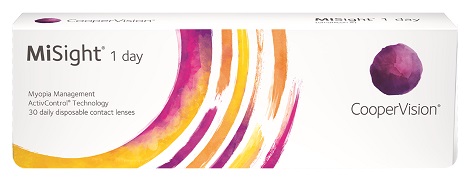
The newest attempt to keep myopia under control is the brand of contact lenses MiSight by CooperVision.
CooperVision is a giant contact lens company that manufactures dozens of brands of contact lenses for every need. New to their gamut of contact lens brands is the first ever contact lens designed for children and aimed at slowing down their myopia progression.
For the remainder of this article, I will go through the information that CooperVision put out about their MiSight contact lenses, and give you my take on it.
All the things I reference can be found at here.
MiSight Intro
While glasses and soft contact lenses can correct the condition [myopia], until now, they have been unable to slow its rate of progression. That’s why we developed MiSight®as part of our Myopia Management System™.
This statement was taken from the first paragraph on their site and right off the bat, red flags are set off.
If you’ve read this entire article, you’ll see that I just presented several different types of glasses and contacts lenses that have been proven to slow the rate of myopia progression. To claim otherwise is simply misleading.
MiSight daily disposable contact lenses not only optically correct existing myopia, giving clear distance and near vision, but MiSight has also been proven to slow the progression of myopia in most children.
Perfect. If well conducted studies prove that MiSight contact lenses are effective at slowing down myopia progression, then that’s something I can get behind. This would have been a great place to include a link to their study methods and results, but a link to any studies seems to be missing here. We’ll have to look further to see if there are any links to studies to be found (Spolier alert, don’t hold your breath).
At A Glance
Reduces myopic progression, for better vision when not wearing glasses or contact lenses
The use of the word ‘better’ in this statement is questionably deceiving. What they really mean by ‘better’ is that “when not wearing glasses or contact lenses, your child’s vision will not get worse as fast.”
Reduces the chance of developing high levels of myopia (-6.00D or more) which may lower the incidence of eye diseases associated with short-sightedness such as retinal detachment and glaucoma
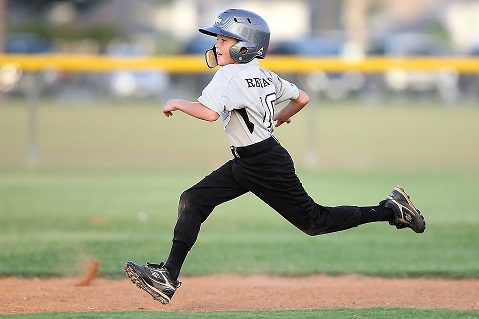 As long as this is back up by well conducted studies, this statement is fine. Having high levels of myopia does in fact increase your risk for other eye conditions such as retinal detachment and glaucoma.
As long as this is back up by well conducted studies, this statement is fine. Having high levels of myopia does in fact increase your risk for other eye conditions such as retinal detachment and glaucoma.
May improve the self-esteem of children and teenagers in terms of their ability to participate in sporting activities and their social acceptance
Sure, in as far as wearing glasses is a hindrance on participating in sports. Saying that wearing glasses is socially unacceptable is stretch if you ask me, but it is true that most people prefer their appearance without glasses. However, these benefits can be a achieved with any brand of contact lenses.
Daily disposable lenses mean there’s no cleaning, disinfection or worrying about lost lenses
Being designed for children, it’s practically a must that MiSight be daily disposable. The responsibility and seriousness of having to properly clean and store monthly contact lenses can be a lot for children to uphold. Daily disposable contact lenses are much safer for children.
Low dehydration rates, delivers suitable oxygen transmission for daily wear and provide good all-day comfort and eye health
Dehydration rates are linked to a property known as water content % and oxygen transmission is linked to a property known as dk/t. Neither of these values are specified on this site, so looks like we’ll just have to take their for it on that one.
Why Control Myopia Progression?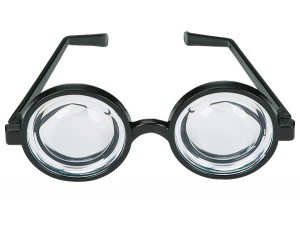
A reduction in progression of myopia could mean a lower prescription giving better vision when not wearing glasses or contact lenses.
True
For children who would go on to develop high levels of myopia (for example -6.00D or more) a reduction in progression of myopia could mean … a lower incidence of eye diseases associated with high myopia such as retinal detachment or glaucoma in later life¹.
True
Current Approach
1. Current approaches to manage myopia progression include atropine, Ortho-K and bifocal or progressive addition (PAL) spectacle lenses.
Exactly. So on this page they contradict what they said earlier about glasses and contact lenses not being to slow the progression of myopia.
Atropine has been shown to slow down the rate of progression of myopia however it has side effects including photophobia and reduced accommodation as well as long term safety concerns².
Dosed appropriately, a lot of the side effects mentioned here are mitigated, however, atropine remains a very uncommon way of trying to slow myopia progression.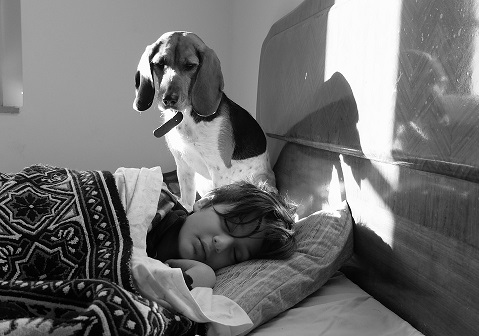
Ortho-K was originally developed to control refractive error however it is believed flattening the central cornea induces an effective peripheral power profile that may control eye growth.
They phrased this to make it sound like controlling eye growth is bad, but in fact, that is the goal in every myopia prevention treatment. High myopia results when the eye grows too long.
Disadvantages of Ortho-K include discomfort and increased risk of infections; it’s also complex requiring specific fitting and management skills³.
Additional disadvantages of Ortho-K is that it’s very expensive and children must never forget to wear and clean their lenses every single day.
What they don’t mention here is that MiSight contact lenses also increase the risk of infections, as all contact lens wearers are more at risk of infection compared to non-contact lens wearers.
Bifocal and PAL spectacles have been used to try and slow the rate of progression of myopia. Results have been variable and mixed perhaps due to non compliance in terms of ‘looking round’ the near zones of the lenses⁴.
True.
The Myopia Management System™
The Myopia Management System™ is a holistic approach to minimizing myopic progression and can benefit children with myopia or those at risk of developing myopia.
Given the following definitions for ‘holistic’, I’m uncertain why they decided to characterize their Myopia Management System as such.
Cambridge English Dictionary
Dealing with or treating the whole of something or someone and not just a part.
Merriam-Webster
Holistic medicine attempts to treat both the mind and the bod.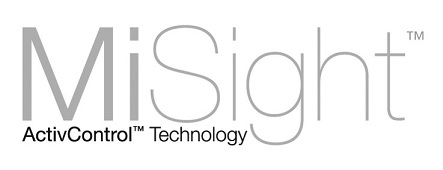
Children, especially those with myopic parent(s) can benefit from regular eye examinations and strategies to reduce the likelihood of the onset of myopia.
Yes…
Children with myopia will of course benefit from regular eye examinations and strategies to reduce the rate of progress of myopia.
Ok…
Myopic children can also benefit from ActivControl Technology™, used in MiSight™, which has been shown to reduce the rate of progression of myopia⁵.
I wish they had elaborated more on what their Myopia Management System was before they threw out another term: ActivControl Technology. So far they haven’t described either, and they continue to reference data from studies that they don’t provide links to.
In this case at least there is a footnote that reads: Data on file, CooperVision 2009 (DIMENZ study report)
So there is it, the study they’ve been referencing all this time. Let’s analyze this study and see if it actually confirms what CooperVision has been claiming about their MiSight contact lenses.
Click here for more about this study.
Studies have shown that one of the most significant factors associated with a high prevalence of myopia is the time spent on outdoor activities⁶.
True.
Children at risk of developing myopia, for example children with one or more myopic parents, can reduce the risk of myopia onset by spending time on outdoor activities⁶.
True. Not sure how this statement is any different than the previous statement, but true.
Utilizing MiSight™ with ActivControl™ Technology in combination with lifestyle changes can benefit children who are myopic by reducing the rate of progression of myopia in most cases⁵ ⁶.
Worded this way, this statement really isn’t saying anything. We already know that lifestyle changes alone can help reduce the progression of myopia, so of course that’s true about Misight lenses + lifestyle changes.
To me it’s almost like they’re trying to use the ‘lifestyle changes’ clause as a fail-safe for their claim, because if you use MiSight and it doesn’t work you, they can always point to not making adequate lifestyle changes as the reason for why it didn’t work.
Combining the use of MiSight™ with increased time spent on outdoor activities may give an even greater benefit.
Another empty statement here. The use of the word ‘may’ implies that the treatment plan might, or it might not work. That is true and obvious for every treatment plan, so there’s nothing learned here.
MiSight™ and ActivControl™ Technology
Designing and making a soft contact lens that gives clear vision and can control the rate of progression is a major scientific and technological breakthrough and, in the majority of cases, finally offers a simple, comfortable way to treat the progression of myopia.
I won’t disagree with this statement too much. It is true that MiSight is the first soft contact lenses that is designed to control myopia progression. Whether you want to call that a major scientific breakthrough or not is just a matter or perspective I suppose.
ActivControl™ Technology results in a soft contact lens that gives clear vision and can control the rate of progression, in the majority of cases⁵.
They have to repeat ‘in the majority of cases’ because of course, this lens will not work for everyone.
MiSight™ is a soft, daily disposable contact lens in the proven Proclear® material. The benefits of using soft daily disposable lens include comfort with no need for cleaning or disinfecting the lenses. The Proclear® material has been shown to have low dehydration rates, good all day comfort and it has a Dk/t (36.6) greater than the Holden Mertz criteria for daily wear (24).
This is a technical statement talking about the properties of the material that is used to make the MiSight contact lenses, and it is full of holes. Allow me to unpack it.
The Material
 They say here that they use the Proclear material. This is almost certainly false because Proclear is a monthly disposable lens, and MiSight is a dailiy disposable lenses. Monthly and daily lenses are made very differently.
They say here that they use the Proclear material. This is almost certainly false because Proclear is a monthly disposable lens, and MiSight is a dailiy disposable lenses. Monthly and daily lenses are made very differently.
It is possible that they meant that MiSight uses the Proclear 1-day material, which is a daily disposable lens.
Proclear material: omafilcon B
Proclear 1-day material: omafilcon A
Which one does MiSight use? That is unclear.
Dk/t (Oxygen Transmissibility)
Above, CooperVision claims that MiSight (based on the Proclear material) has a Dk/t value of 36.6. It is unclear to me where this figure came from, since their very own website lists the Dk/t values of Proclear and Proclear 1-day respectively as:
Proclear Dk/t: 52.3
Proclear 1-day Dk/t: 28
I don’t like all of these contradictions, because with every wrong or uncheckable fact, CooperVision loses credibility and gives us less reason to believe their claims about MiSight.
A daily disposable lens, such as MiSight™, is ideal for even young children. Not having to clean the lenses and with lost or damaged lenses easily replaced daily disposable lenses are the ideal option for even young children. A daily disposable lens, rather than a lens replaced every two or 4 weeks, can also reduce the occurrence of eye infections and symptoms related to ocular allergies⁷.
True
MiSight™ uses ActivControl™ Technology which results in clear distance, intermediate and near vision while the peripheral treatment zones of the lens creates myopic retinal defocus that has been shown to control the rate of progression of myopia⁵.
Here they reveal how MiSight contact lenses actually differ from regular contact lenses. They have concentric treatment zones which have a different prescription than the rest of the lens. These treatment zones add an extra +2.00 power to the actual prescription.
All of the studies and data referenced on their website refers to a study which showed that adding these concentric treatment zones actually helps reduce the progression of myopia.
You can read more about that study here.
Children may be aware of a slight shadowing of images when first introduced to ActivControl™ Technology, most of those fitted report the shadowing decreases over the first week of wear⁸.
This is not surprising, as half the contact lenses actually have the ‘wrong’ prescription in it. The reason why the shadowing takes time to improve is because the brain needs time to get use to the lenses and selectively ignore those parts of the vision.
Contact Lenses and Children
This page basically only says that children aged 8 and above are not too young to be fit with daily disposable contact lenses, and I would agree with that.
You can read more on the topic of children wearing contact lenses here.
Fitting MiSight™ to Children
This page is not meant for patients. It contains guidelines for optometrists on how to fit the MiSight contact lens.
Conclusion
So there you have it. That is everything that CooperVision has put out about the MiSight contact lenses.
The concept is similar to other techniques used in myopia prevention, but this is the first time it has been applied and marketed in a soft contact lens.
Will it Work?
The only study that seems to have been conducted on these lenses was the DIMENZ study, which you can read about here. Generally, a single small scale study such as the DIMENZ does not provide conclusive scientific proof of a concept, but it certainly it better than nothing.
I would love to see more studies that enroll more participants and that track results over longer periods of time to give us a big picture of how MiSight affects myopia progression.
But in the absence of such large scale studies, I think that using MiSight for your children with quickly progressing myopia does have potential benefits. To put all the chances of success on your side, you look into every possible treatment options of your child, and employ every one that applies to your situation. i.e., MiSight contact lenses + behavioral changes + MyoVision glasses (for when contact lenses are not being worn) as an example.
If you have any experience or questions about MiSight contact lenses, or myopia control in general, please share them in the comments below.

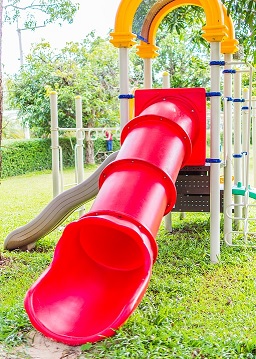
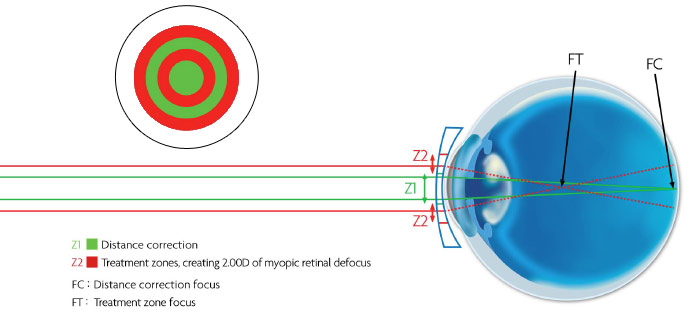


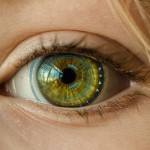
Leave a Reply